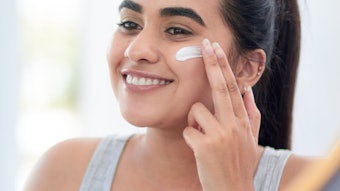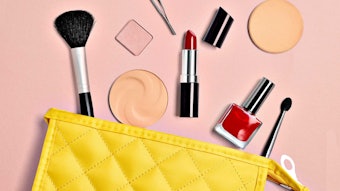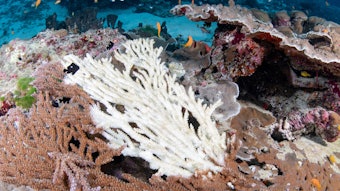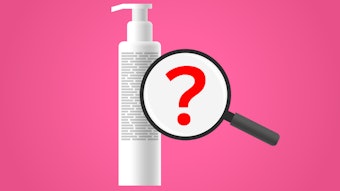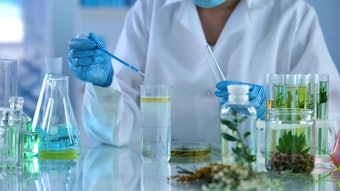
Consumers have voted with their dollars—their verdict? They want more natural products and ingredients. We have natural diapers, paper towels, cosmetics and even foods (e.g., no hormones) but frankly, consumers have been inconsistent in their interest in what is good for both themselves and the environment. They have been far less reactive to the packaging their products come in, compared to the ingredients within. Each of us brings home mountains of packaging from stores each week: paper, glass, cardboard, plastic and aluminum. Some of the waste from this packaging enters recycling streams but sadly, a great deal is deposited into landfills and our oceans and lakes. This has been an environmental blind spot in the movement toward natural and a contributor to frightening levels of environmental abuse.
In the natural cosmetics movement, plastic microbeads became a target. Consumers and regulators adopted a sudden abhorrence to the use of these tiny plastic particles that provide abrasiveness in cosmetic products, leading many countries to ban them outright.1 While they represented a relatively minor contribution to worldwide plastic waste, they did bring attention to the unnecessary use of plastics in some applications. In the case of cosmetic products, these microbeads could be substituted by other, more natural ingredients.
We have plastic bottles, jars, pumps, overwraps, closures, trays and tubes—but where do these go after use?
Plastic production went from 50 million metric tons in 1964 to 311 million metric tons in 2014. This amount of plastic has been estimated to equal 900 Empire State buildings, and is forecasted to double over the next 20 years. Approximately 26% of all plastic produced is used in packaging; on a global basis, that comes to about 90 million tons per year. It has been estimated that only about 14% of plastic packaging is collected for recycling—the remainder goes to landfills or elsewhere in the environment.2
Most troubling is the estimate that there are more than 150 million tons of plastics in our oceans today. At least eight million tons of plastics leak into the ocean each year, which is the equivalent to dumping the contents of one garbage truck into the ocean every minute. By 2025, there will be one ton of plastic for every three tons of fish; and by 2050, there will be more plastic in the ocean than fish, by weight.2
It is Time to Ask: 'Where Does it Go?'
In hindsight, it is easy to see why plastics became so popular as packaging components. They are lightweight, waterproof, flexible, moldable and relatively inexpensive, when made in large quantities. Many also are recyclable, where recycling systems exist. They also make outstanding packages for personal care products and over-the-counter drugs.
Before plastics, glass was the high benchmark for packaging in these industries. Glass ensured that products were protected from water loss and oxygen ingress. But glass was breakable and heavy, so plastics were the solution. We have plastic bottles, jars, pumps, overwraps, closures, trays and tubes—but where do these go after use? Plastic bottles can be incorporated into recycling programs but many of the other components simply cannot.
There are estimates that the cosmetics and personal care industry accounts for one third of all landfill waste.3 Yet, in spite of their enthusiasm for natural products, it seems consumers too rarely consider where the personal care product packaging goes once it is emptied. Too many purchasing decisions seem detached from environmental concerns about packaging.
Circular Economy Strategy
The European Commission recently adopted a circular economy strategy on plastics, which is meant to increase plastic packaging recycling to 55% and reduce landfill to 10% by 2030. Some European countries have deployed container deposit schemes. This approach is taken in the United States as well—currently, the country’s overall recycling rate is 34% but in states where container deposit laws are enforced, there is an average rate of 70%.2
Another adaptor of the circular economy is the “New Plastics Economy.” This initiative is led by the Ellen MacArthur Foundation, an organization established in 2010 to promote the development of a circular economy worldwide. The organization works with businesses, governments and educational institutions to encourage innovative thinking and develop circular economic initiatives. The New Plastics Economy aims to rework the way our society uses plastics by working with companies, retailers, plastic producers and packaging manufacturers, as well as local municipalities and businesses, to encourage the sustainable utilization of plastic.2
New Plastics Economy suggests the following measures to reduce plastic waste.
- Set up a global, industry-wide, ongoing effort to develop and facilitate the adoption of globally recognized plastic packaging design standards.
- Converge toward clearly defined global labeling and material marking standards.
- Establish a global framework for the implementation of modular and reusable business-to-business (B2B) packaging.
- Scale-up the use of industrially compostable plastics for targeted applications—this was shown to be successful in the city of Milan and during the London Olympic Games.
- Transform and strengthen markets for recycled plastics, including: supporting smaller reprocessing companies and those that source recycled content at the small- to medium-scale; allowing for more granular and standardized material specifications to better match supply and demand; and strengthening demand for recycled content through industry commitments or policy.2
There is reason to believe the move to reduce plastic use has begun among consumers. More are looking at the environmental impacts of product packaging and will prefer brands that shown to be environmentally friendly. Millennial women were raised to be environmentally responsible; 51% of millennials have stated they are willing to pay extra for sustainable products. In addition, the same percentage say they check product packaging and labeling for sustainable measures.4
How Companies are Reducing Packaging Waste
The Estée Lauder Corporation, which presides over 29 brands including Origins and Aveda, has set design guidelines to make sustainable packaging a priority in the company.
“We can make small redesigns in the packaging that have a huge impact and that the consumer may not even notice,” John Delfausse, Estée Lauder’s former chief environmental officer for corporate packaging, has previously said. For example, lightweighting, i.e., slimming the shape and weight of a bottle, tube or jar while maintaining the same volume of product—has been a common practice with Estée Lauder products. It is being adopted throughout the industry, too.5
The personal care industry has shown it is capable of constant change and for innovation in its products. The time to rethink packaging is now.
Companies are keeping a close watch on what may be the next wave in packaging: bioplastics and bioresins—material made from corn and sugar substances that are renewable resources. These are already used in some cosmetic and skin care containers.5
In addition, many small cosmetic companies are employing reusable/refillable packaging in their product lines; such as Zao Organic Makeup, whose packaging is made from bamboo. Another company that uses bamboo for packaging is Elate Cosmetics. This eco-friendly company sells products in similar reusable, refillable palettes for products including lipsticks, mascaras and eyeliner. Their products are even shipped in envelopes comprised of seed paper that can be planted after use.6
Ecovative, a small, U.S.-based company, has been developing an array of environmentally friendly materials that perform like plastics but are made by mushrooms. The company’s technology uses the webs of thread-like mushroom roots, known as mycelium, which consume crop waste.7 These materials can be grown and recycled, as opposed to being drilled, pumped, refined and discarded. Under the right conditions, the mycelium turn waste into a material with similar properties to polysytrene foam in just a few days and similarly, the mushroom packaging can be molded into any shape.8
Finally, paper can be used in cosmetic packaging as well. The Chicago Paper Tube and Can Company is a manufacturer that sells packaging for various uses, including for cosmetics. Specifically, these materials are 100% recycled fibers and up to 95% post-consumer content. These paper containers are also said to demonstrate high levels of biodegradability. In addition, the adhesives used by the company are water-based, and the dyes used for printing are vegetable- and soy-based inks. These paper containers have a water-resistant coating to allow for the storage of balms and lotions.9
The Right Direction
These steps all signal movements in the right direction. However, a major shift will be needed to stop the worrisome trends we see today. Additionally proposed steps include improving the economics and uptake of recycling, drastically reducing the leakage of plastics into the natural environment, and decoupling plastics from fossil fuel feedstocks by exploring and adopting renewable feedstocks.
The personal care industry has shown it is capable of constant change and for innovation in its products. The time to rethink packaging is now. No doubt, significant competitive advantage will be gained by any brand that successfully executes natural packaging alongside its natural product positioning.
References
All websites accessed on March 8, 2018
- indy100.com/article/microbeads-harmful-where-are-they-banned-countries-7549811
- weforum.org/docs/WEF_The_New_Plastics_Economy.pdf
- theguardian.com/sustainable-business/2014/nov/18/online-shopping-holidays-packaging-waste-recycling
- beautypackaging.com/issues/2017-04-01/view_features/eco-responsible-packaging-opportunity-knocks-for-beauty-brands/
- nytimes.com/2010/03/25/fashion/25skin.html
- treehugger.com/organic-beauty/6-cosmetics-companies-refillable-packaging.html
- ecovativedesign.com/home?ref=lp
- theguardian.com/sustainable-business/mushrooms-new-plastic-ecovative
- chicagopapertube.com/About/History/history.html



